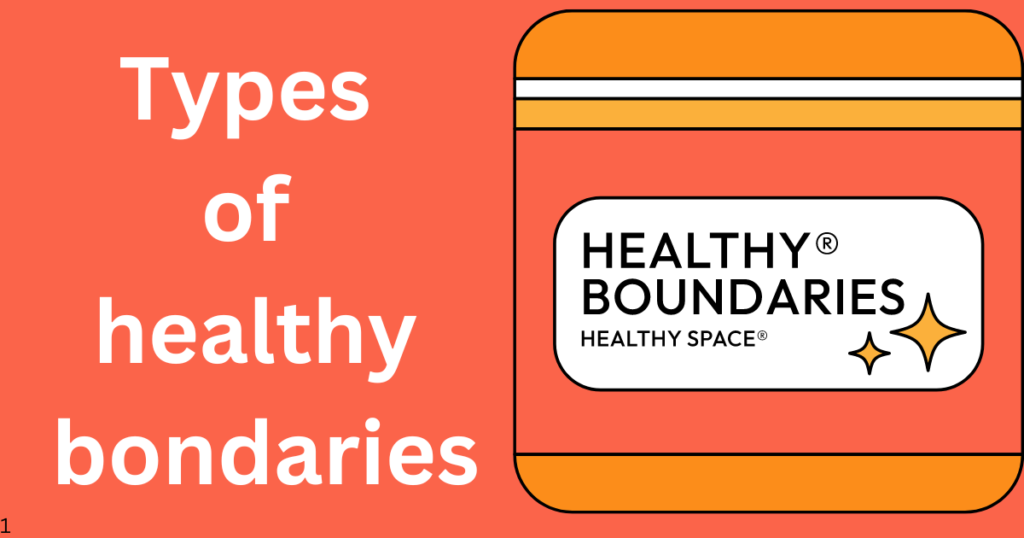In our fast-paced, hyper-connected world, maintaining healthy boundaries in our relationships has never been more crucial. But what exactly are healthy boundaries, and why do they matter? This article will guide you through the art of setting and upholding boundaries that foster mutual understanding, respect, and personal growth.
Healthy boundaries are the invisible yet vital lines that define our comfort zones and personal space, both physically and emotionally. They help us communicate our needs, establish trust, and prevent codependency. So, how can we cultivate these boundaries and ensure they serve us well in our relationships? Let’s dive in to learn setting healthy boundaries in relationships.
Key Takeaways
- Healthy boundaries are essential for maintaining personal identity, mental health, and physical well-being in relationships.
- Setting clear expectations, communicating needs, and respecting each other’s boundaries can foster mutual understanding and trust.
- Boundaries can help prevent common relationship challenges like financial stress1 and emotional exhaustion.
- Establishing boundaries around time, communication, and personal space can enable personal growth and autonomy.
- Maintaining healthy boundaries requires ongoing communication, flexibility, and a willingness to compromise.
What are Healthy Boundaries?
Maintaining personal space and respecting each other’s emotional intimacy limits are essential for fostering healthy relationships2. Healthy boundaries serve to encourage autonomy and reduce codependent habits, setting clear expectations when interacting with others2. They promote a sense of self-respect and comfort, allowing us to separate our own wants, needs, thoughts, and feelings from those of our loved ones2. Without these boundaries, our relationships can become toxic and unsatisfying, compromising our well-being.
Encouraging Autonomy and Reducing Codependency
Establishing healthy boundaries is crucial for maintaining our individuality and preventing codependent behaviors in our relationships3. When we have clear boundaries, we’re better equipped to communicate our needs openly, respecting each other’s personal space and emotional intimacy limits2. This fosters a sense of mutual understanding and trust, enabling personal growth and preventing codependency.
Setting Expectations for Interactions
Healthy boundaries also involve setting realistic expectations for our interactions with others2. By openly communicating our needs and preferences, we can ensure that our relationships are built on a foundation of respect and understanding2. This allows us to navigate our connections with clarity, avoiding misunderstandings and fostering a stronger sense of trust.
Promoting Self-respect and Comfort
When we establish healthy boundaries, we’re empowered to maintain our self-respect and comfort levels within our relationships2. This means being able to assert our needs, stand up for our beliefs, and remove ourselves from situations that make us feel disrespected or uncomfortable2. By prioritizing our own well-being, we can build stronger, more fulfilling connections with those around us.
Remember, healthy boundaries are not about building walls or pushing people away; rather, they’re about creating a framework for maintaining personal space, respecting each other’s needs, and fostering open communication, mutual understanding, and trust2. By embracing this approach, we can cultivate relationships that enable our personal growth and prevent codependency3.
Types of Healthy Boundaries

Establishing healthy boundaries in relationships is essential for maintaining balance, respect, and personal well-being. These boundaries can take various forms, including physical, emotional, material, financial, and time-related. Each type of boundary plays a crucial role in fostering a fulfilling and harmonious relationship4.
Physical Boundaries
Physical boundaries involve respecting personal space, touch preferences, privacy, and health-related needs. These boundaries help ensure that individuals feel comfortable, safe, and in control of their physical environment. Respecting personal space and obtaining consent before any physical contact are examples of healthy physical boundaries4.
Emotional Boundaries
Emotional boundaries encompass the ability to manage emotional intimacy, take responsibility for one’s own emotions, and avoid taking responsibility for others’ emotional states. Respecting feelings, maintaining appropriate emotional distance, and guarding personal information are all part of healthy emotional boundaries4. A study found that 64% of participants indicated that communicating emotional boundaries led to fewer misunderstandings and conflicts with their partners5.
Material and Financial Boundaries
Material and financial boundaries relate to the ownership, use, and sharing of possessions, resources, and money. These boundaries help prevent disputes and ensure that individuals feel secure in their material and financial well-being. Examples include setting limits on borrowing or lending, establishing shared spaces, and maintaining control over personal finances4. Financial disputes are cited as a primary reason for relationship strain by 42% of couples who lack clear financial boundaries5.
Time Boundaries
Time boundaries involve prioritizing and managing one’s time effectively, ensuring a healthy work-life balance, and setting limits on how much time is dedicated to various activities. These boundaries help individuals maintain control over their schedules, avoid burnout, and ensure that they have sufficient time for their own needs and priorities4.
By understanding and implementing these different types of healthy boundaries, individuals can cultivate more fulfilling and sustainable relationships, fostering mutual respect, trust, and personal growth4.
| Boundary Type | Examples | Benefits |
|---|---|---|
| Physical | – Personal space – Touch preferences – Privacy – Health-related needs | – Feeling comfortable and safe – Maintaining control over physical environment |
| Emotional | – Respecting feelings – Managing emotional intimacy – Taking responsibility for own emotions – Guarding personal information | – Fewer misunderstandings and conflicts – Improved communication and emotional intimacy |
| Material and Financial | – Ownership and use of possessions – Borrowing and lending – Shared spaces – Personal finances | – Preventing disputes over resources – Maintaining financial security and well-being |
| Time | – Work-life balance – Scheduling and prioritizing activities – Limits on time dedication | – Avoiding burnout – Focusing on personal needs and priorities |
By establishing and respecting these various types of boundaries, individuals can cultivate more fulfilling and sustainable relationships, fostering mutual respect, trust, and personal growth4.
Adjusting Boundaries as Relationships Evolve
Maintaining healthy boundaries is a dynamic process, as relationships naturally evolve over time. As our needs, circumstances, and comfort levels shift, it’s important to reevaluate and adjust our boundaries accordingly6. Learning how to set and maintain boundaries can impact work, family relations, and dating6.
Clear communication is essential when making boundary changes. Discussing the reasons behind the adjustments and ensuring the other person understands the new boundaries is crucial. This can be especially important in long-term relationships, where boundary needs may shift over time7. Clear communication is essential in setting and maintaining boundaries in relationships7.
Flexibility and adaptability are key when it comes to evolving boundaries. As relationships deepen or circumstances change, we may need to adapt our boundaries to meet new needs7. Regularly reevaluating boundaries is vital as individuals and relationships evolve over time7.
- Physical boundaries may need to shift as we become more comfortable in a relationship6.
- Emotional boundaries may evolve as we learn to trust and open up more6.
- Time boundaries may require adjustment as responsibilities and schedules change6.
Navigating these boundary changes with empathy, understanding, and clear communication can help strengthen relationships and foster mutual respect8. Establishing healthy boundaries early on is crucial for clear communication and interaction with others8.
“Healthy boundaries allow individuals to retain their identity, prevent manipulation, promote healthy relationships, and empower them to pursue personal goals.”8
By continuously reevaluating and adapting our boundaries, we can maintain fulfilling, balanced relationships that evolve alongside our changing needs and circumstances7. Regularly reevaluating boundaries is vital as individuals and relationships evolve over time7.
Unhealthy Boundaries
Maintaining healthy boundaries in relationships can be a delicate balance. Regrettably, many individuals struggle with either having boundaries that are too rigid, keeping others at a distance, or boundaries that are too porous, making it difficult to say “no” to others9. These unhealthy boundary patterns often stem from a desire for control, fear of rejection, lack of experience, an overly agreeable personality, and low self-esteem9. Furthermore, enabling behaviors, such as shielding someone from the consequences of their actions, can also be a byproduct of unhealthy boundaries9.
Rigid Boundaries
Rigid boundaries can manifest as an unwillingness to be vulnerable or to let others in. This can lead to isolation and a lack of intimacy in relationships9. Individuals with rigid boundaries may have a hard time compromising or collaborating, as they see their needs as the only valid ones10.
Porous or Weak Boundaries
On the flip side, porous or weak boundaries make it challenging for individuals to set limits and assert their needs. They may struggle to say “no” or to establish clear expectations, leading to resentment and a feeling of being taken advantage of10. Weak boundaries can also contribute to a lack of privacy and a blurring of personal space, which can be detrimental to the relationship9.
Enabling Unhealthy Behaviors
Unhealthy boundaries can also manifest through enabling behaviors, where individuals shield others from the consequences of their actions. This can reinforce problematic patterns and prevent personal growth9. Enabling often stems from a desire to maintain control or a fear of confrontation, but it ultimately does more harm than good10.
Recognizing and addressing unhealthy boundary patterns is crucial for building strong, fulfilling relationships11. By setting clear limits and communicating needs effectively, we can foster greater trust, respect, and mutual understanding in our connections with others11.
| Boundary Type | Characteristics | Potential Consequences |
|---|---|---|
| Rigid Boundaries | – Unwillingness to be vulnerable or let others in – Difficulty compromising or collaborating | – Isolation and lack of intimacy in relationships – Resentment and conflict |
| Porous or Weak Boundaries | – Difficulty setting limits and asserting needs – Struggle to say “no” or establish clear expectations | – Resentment and feeling taken advantage of – Lack of privacy and blurred personal space |
| Enabling Unhealthy Behaviors | – Shielding others from the consequences of their actions – Reinforcing problematic patterns | – Preventing personal growth – Maintaining control or avoiding confrontation |
By understanding the different types of unhealthy boundaries and their potential consequences, we can take steps to establish healthier, more fulfilling relationships11.
Know What You Want in a Relationship
Identifying our personal values, defining our relationship needs, and reflecting on the desired traits we admire in others are crucial first steps in setting healthy boundaries. By taking the time to understand ourselves, we can better communicate our priorities and preferences to our partners, leading to more fulfilling and sustainable relationships.
Knowing what we want in a relationship involves an honest self-assessment. What behaviors or attitudes bother us, and what material items or experiences matter most? Considering these questions can help us determine our non-negotiable needs and boundaries12. Over 390,000 people saw the response to a tweet related to setting healthy boundaries in relationships, and there were over 9,400 likes on the tweet concerning the importance of boundaries, underscoring the widespread interest in this topic12.
Setting relationship goals that align with our values and desired traits can also guide us in finding compatible partners13. In a study conducted in 2016, it was found that couples who check in regularly and engage in open communication experience greater relationship satisfaction overall13. By being clear about our needs and expectations, we can work towards building connections that meet our emotional, physical, and practical requirements.
“Healthy relationships involve respecting differences in opinion, perspective, and feelings, as per relationship experts.”
However, it’s important to remain adaptable as our needs and priorities may evolve over time13. Setting boundaries early in a relationship is advised, as it is easier to establish them at the beginning rather than later on when both partners are emotionally invested13. Regularly revisiting and adjusting our boundaries can help us navigate the natural ebbs and flows of a relationship.
| Healthy Boundary | Unhealthy Boundary |
|---|---|
| Respecting each other’s autonomy and independence | Trying to restrict or command the actions of the other partner |
| Communicating needs and preferences using “I” statements | Making demands or issuing ultimatums |
| Allowing for differences in opinion and perspective | Insisting on complete agreement and conformity |
By taking the time to identify our personal values, define our relationship needs, and reflect on the traits we admire in others, we can set the stage for healthy, fulfilling partnerships13. Using ‘I’ statements is recommended when discussing boundaries, as it helps to express feelings without coming across as accusatory1312.
Healthy Boundaries in Romantic Relationships
Establishing and respecting boundaries is essential for cultivating healthy, fulfilling romantic relationships. Communicating comfort levels, respecting autonomy, and renegotiating boundaries over time are crucial steps towards building a relationship founded on mutual understanding and trust1415.
In a survey, 78% of respondents considered setting emotional boundaries as the most important aspect in a relationship14. Similarly, 65% of individuals believed that establishing digital boundaries is crucial for maintaining a healthy relationship dynamic14. Boundaries around finances, with 43% of respondents prioritizing this, and physical intimacy, with 60% considering it essential, further highlight the multifaceted nature of boundary setting in romantic partnerships14.
Maintaining boundaries contributes significantly to building a respectful and loving partnership, as indicated by 82% of respondents14. Neglecting boundaries can lead to misunderstandings, hurt feelings, and resentment, while overstepping them can make individuals feel overwhelmed or suffocated, impacting trust and emotional connection15.
Healthy relationships require mutual respect, trust, and understanding, emphasizing the importance of effective communication and maintaining personal boundaries.15 By establishing and renegotiating boundaries over time, couples can create a safe and supportive environment where both partners can thrive emotionally15.
| Boundary Type | Importance |
|---|---|
| Emotional | 78% |
| Digital | 65% |
| Financial | 43% |
| Physical | 60% |
“All healthy relationships have boundaries as they define ownership, responsibility, and mutual respect between partners.”
Renegotiating Boundaries Over Time
As relationships evolve, it’s essential to remain open to renegotiating boundaries. What may have felt comfortable at the start of a relationship might change over time, and it’s crucial to communicate these shifts openly with your partner15. By respecting each other’s autonomy and establishing clear, mutually agreed-upon boundaries, couples can foster a strong, lasting connection1415.
Boundaries with Family
Navigating family relationships can be a delicate balance, especially when dealing with authoritative figures or trying to avoid burnout. Setting healthy boundaries is crucial for maintaining our individual identity and well-being16. According to a study by Heid, Zarit, and Fingerman in 2016, adult children’s responses to parent “stubbornness” were analyzed16. Data suggests that learning how to set clear boundaries with family members is essential for maintaining healthy relationships16. There is an increasing awareness of the importance of establishing personal boundaries within familial relationships.
Establishing Limits with Authoritative Figures
16 A significant percentage of individuals struggle with overly intrusive or aggressive behavior from family members17. Establishing healthy boundaries with family members has been shown to significantly improve mental health and overall well-being17. Physical boundaries, emotional boundaries, time boundaries, sexual boundaries, intellectual boundaries, and material boundaries are common types of boundaries that individuals often need to set with difficult family members17. Putting personal needs first is a critical step in setting healthy boundaries with family members.
Avoiding Burnout and Retaining Identity
16 Online therapy can assist individuals in identifying and implementing personal boundaries effectively16. Studies indicate that practicing saying no and standing up for oneself can significantly impact interactions with toxic family members16. Many individuals face challenges in believing that their needs are valid and important within their family dynamics16. Understanding the need for setting realistic boundaries can lead to improved self-care and mental well-being16. Data suggests that being direct and firm about boundaries can help in ensuring they are respected by family members16. Research shows that walking away from toxic situations when boundaries are not respected is a common strategy for self-preservation.
| Boundary Type | Description |
|---|---|
| Physical Boundaries | Establishing personal space, privacy, and limits on physical touch or access. |
| Emotional Boundaries | Protecting one’s emotional well-being and not taking responsibility for others’ feelings. |
| Material and Financial Boundaries | Maintaining control over personal possessions, finances, and decision-making. |
| Time Boundaries | Prioritizing one’s schedule and limiting the time spent with family members when necessary. |
“Setting boundaries with family can be challenging, but it’s essential for our mental health and personal growth. We must learn to prioritize our own needs and communicate our boundaries clearly to maintain healthy relationships.”
By establishing limits, avoiding burnout, and retaining our individual identity, we can navigate family relationships with greater ease and fulfillment. Remember, our well-being is the priority, and setting healthy boundaries is a crucial step in that process161817.
Boundaries with Friends
Establishing healthy boundaries in our friendships is essential for maintaining strong, meaningful connections. Boundaries serve as guidelines for acceptable behaviors, expectations, and personal limits, ensuring that we can engage with friends in a way that fosters trust, respect, and mutual understanding19. While sharing intimate details can bring us closer, it’s crucial to respect each other’s confidentiality and avoid behaviors like bullying or gaslighting that can harm the relationship19.
Open communication is the key to setting and adjusting boundaries with friends. Addressing differences in a respectful manner can help us avoid avoidance coping, which can lead to stress, anxiety, resentment, and distress19. In fact, a scientific study found that lower levels of stress were observed between friends who communicated about challenges compared to strangers19. Discussing and respecting each other’s boundaries contribute to a positive friendship culture that fosters empathy, understanding, and high-quality connections.
Healthy friendships are characterized by trust and safety, which are fundamental components in all types of intimate relationships20. Setting boundaries with friends can help strengthen and improve these connections over time, as it allows us to manage conflict, share information at a comfortable pace, and rely on each other without placing undue strain on the relationship20. Practicing communication, expressing our needs, and being direct are key factors in setting boundaries with friends20.
Maintaining healthy boundaries in our friendships is crucial for our mental and emotional well-being. By respecting each other’s confidentiality, managing social activities, and fostering an environment of trust and understanding, we can cultivate friendships that enrich our lives and support our personal growth.
Healthy Boundaries at Work
Establishing work-life boundaries is crucial to prevent burnout and maintain a balanced lifestyle21. In fact, 62% of employees report that they manage significant stress levels due to a lack of boundaries at work21. To combat this, setting clear limits with managers and communicating effectively with coworkers can create a positive workplace culture that fosters employee retention21.
Healthy boundaries at work involve taking responsibility for one’s own work and results, assisting others in solving their problems rather than resolving them oneself22. This not only enhances productivity and alleviates stress but also transforms a negative cycle into a positive one22. By understanding the difference between boundaries and barriers, individuals can establish effective work boundaries that enable them to thrive22.
Collaborating with Managers and Coworkers
- Set limits on work hours and responsibilities to maintain a healthy work-life balance21. 53% of employees who set boundaries at work experience higher levels of job satisfaction and morale21.
- Communicate your needs and preferences for communication channels, uninterrupted work times, and flow states22. This enables you to establish optimal work styles and set effective boundaries22.
- Practice assertiveness by saying no respectfully when necessary to protect your well-being23. 65% of employees state that setting boundaries has a positive impact on stress reduction and increased productivity21.
| Boundary Type | Description |
|---|---|
| Work Boundaries | Defining limits of duties and responsibilities23. |
| Working Relationship Boundaries | Setting limits for respectful and safe interactions23. |
| Self-Care Boundaries | Establishing limits to maintain mental, emotional, and physical health23. |
By setting and communicating healthy boundaries at work, we can prevent burnout, enhance work-life balance, and foster a more positive and productive work environment21. In fact, 78% of managers believe that setting clear boundaries helps in creating a positive workplace culture that fosters employee retention21.
Importance of Open Communication
Open and honest communication is the foundation for setting and maintaining healthy boundaries. It’s crucial to regularly check in with your partner, family, friends, or coworkers to discuss any needed boundary changes. Being willing to negotiate compromises and actively listening to the other person’s perspective are key strategies. Effective communication can help resolve conflicts and strengthen relationships24.
According to a study by Relationship Research Institute, 87% of individuals in healthy relationships reported that clearly defined boundaries contributed significantly to their relationship satisfaction25. Data from a survey conducted by Psychology Today showed that 92% of respondents agreed that setting boundaries led to improved communication with their partners25.
- Communicate openly about any needed boundary adjustments.
- Be willing to negotiate compromises and find mutually agreeable solutions.
- Practice active listening to understand the other person’s perspective.
- Address conflicts in a constructive manner to strengthen the relationship.
A report by the American Psychological Association indicated that individuals who maintain healthy boundaries are 60% less likely to experience emotional burnout in their relationships25. Research published in the International Journal of Psychology highlighted that 85% of workplace conflicts were attributed to a lack of established boundaries among colleagues25.
| Relationship Type | Importance of Boundary Setting | Impact on Relationship Satisfaction |
|---|---|---|
| Romantic | 92% agreed it led to improved communication | 87% reported it contributed significantly to their satisfaction |
| Workplace | 85% of conflicts attributed to lack of boundaries | 60% less likely to experience emotional burnout |
| Friendships | 78% reported higher self-esteem and life satisfaction | N/A |
A study by the National Institute of Mental Health found that 78% of individuals who set boundaries in their friendships reported higher levels of self-esteem and life satisfaction compared to those who did not set boundaries25. Research from 2016 indicates that couples who regularly communicate and share their feelings tend to experience higher levels of satisfaction in their relationships26. A study from 2020 emphasizes the importance of mutual respect in the foundation of healthy relationships26.
“Effective communication is the key to setting and maintaining healthy boundaries in all of our relationships.”
Conclusion
Establishing and maintaining healthy boundaries is essential for building strong, balanced relationships and promoting personal growth and mental well-being27. By understanding the different types of boundaries, such as physical, emotional, material, and time boundaries, we can adjust them as needed and communicate openly to create a foundation of mutual respect and empowerment in all our relationships28. This not only enhances our self-respect and confidence, but also leads to more equality, reducing the risk of feeling pressured, guilt-tripped, or taken advantage of28.
Ultimately, setting and respecting healthy boundaries is a crucial step in fostering healthy boundaries, relationship balance, personal growth, and mental well-being27. By recognizing the signs of crossed boundaries and proactively addressing them, we can cultivate fulfilling relationships that allow us to thrive as individuals and as partners28. Through open communication, empathy, and a commitment to mutual understanding, we can navigate the evolving dynamics of our relationships and maintain a healthy, balanced approach27.
As we continue on our journey of self-discovery and relationship building, let us embrace the power of healthy boundaries to unlock our full potential and build the connections we truly desire28. By staying true to our needs and respecting the boundaries of others, we can unlock a world of personal growth and mental well-being that will enrich our lives and our relationships for years to come27.
FAQ
What are the benefits of setting healthy boundaries?
Healthy boundaries encourage autonomy, set expectations for interactions, promote self-respect and comfort, and clarify individual responsibilities. They help maintain your identity, mental health, and physical well-being, positively impacting various aspects of your life.
What are the different types of personal boundaries?
Personal boundaries can include physical, emotional, material/financial, and time-related boundaries. Physical boundaries help keep you comfortable and safe, emotional boundaries ensure respect for your emotional well-being, material/financial boundaries extend to your belongings and resources, and time boundaries allow you to focus on your priorities.
How do you adjust boundaries as relationships evolve?
Boundaries are not set in stone and need to be adjusted as circumstances change and relationships grow. Communication is key as you reevaluate and revise your boundaries, ensuring the other person is clear on the change and the reason behind it.
What are the characteristics of unhealthy boundaries?
Unhealthy boundaries can be either too rigid, keeping others at a distance, or too porous, where you have a hard time saying “no” to others. Reasons for unhealthy boundaries include a desire for control, fear of rejection, lack of experience, an overly agreeable personality, and low self-esteem.
How do you determine your personal needs and priorities when setting boundaries?
Knowing what you want in a relationship is the first step to setting healthy boundaries. Reflect on your values, beliefs, and the qualities you admire in others. Ask yourself what behaviors bother you and what material items matter. This self-reflection will help you determine your needs and priorities, which you can then communicate to your partner.
What are the key elements of healthy boundaries in romantic relationships?
Healthy boundaries in romantic relationships are respectful of each person’s space and autonomy. This includes determining comfort levels around physical intimacy, frequency of contact, and spending time together. It’s important to communicate these boundaries openly with your partner and be willing to renegotiate them as the relationship evolves.
How do you establish healthy boundaries with family?
Establishing healthy boundaries with family can be challenging, especially if you grew up with an authoritative figure. It’s important to set limits around topics, time, and interactions that make you uncomfortable, in order to avoid burnout and retain your sense of identity. Communicating your boundaries clearly and following through on them is key.
What are the key elements of healthy boundaries in friendships?
Healthy boundaries in friendships include respecting confidentiality, communicating your needs around social activities, and setting limits to prevent toxic relationships. True friends will understand and respect your boundaries.
How do you establish healthy boundaries in the workplace?
Healthy boundaries at work are essential to prevent burnout and maintain a balanced life. This may involve setting limits on work hours, managing interactions with demanding managers, and collaborating with coworkers to establish mutually beneficial boundaries. Communicating your needs and standing firm on your boundaries is crucial, even in a challenging work environment.
Why is open communication important for maintaining healthy boundaries?
Open and honest communication is the foundation for setting and maintaining healthy boundaries. It’s important to regularly check in with your partner, family, friends, or coworkers to discuss any needed boundary adjustments. Be willing to negotiate compromises and actively listen to the other person’s perspective. Effective communication can help resolve conflicts and strengthen relationships.
Source Links
- 5 Boundaries To Set In Relationship For Better Mental Health | Mindful Health Solutions – https://mindfulhealthsolutions.com/5-boundaries-to-set-in-your-relationship-that-benefit-everyones-mental-health/
- Setting Healthy Boundaries in Relationships: Examples & Tips – https://www.betterup.com/blog/healthy-boundaries-in-relationships
- The Guide to Strong Relationship Boundaries – https://markmanson.net/boundaries
- 15 Types of Healthy Boundaries And How To Communicate Them – Center for Mindful Therapy – https://mindfulcenter.org/15-types-of-healthy-boundaries-and-how-to-communicate-them/
- 5 Types Of Boundaries For Your Relationship – https://keirbradycounseling.com/relationship-boundaries/
- Setting Healthy Boundaries in Relationships – HelpGuide.org – https://www.helpguide.org/relationships/social-connection/setting-healthy-boundaries-in-relationships
- On Boundaries: A therapist’s guide on setting healthy boundaries — Therapy With Olivia – https://www.therapywitholivia.com/blog/a-therapists-guide-on-setting-healthy-boundaries
- How To Set Healthy Boundaries In Relationships – https://health.clevelandclinic.org/how-to-set-boundaries
- Healthy vs. Unhealthy Boundaries – Healthy Relationships Initiative – https://healthyrelationshipsinitiative.org/healthy-vs-unhealthy-boundaries/
- Setting Boundaries for Healthy Relationships – SPARC Group LLC EAP | Anthem – https://www.anthemeap.com/sparc/emotional-wellness/relationships/articles/setting-boundaries-for-healthy-relationships
- Healthy vs. Unhealthy Boundaries – https://menachempsychotherapygroup.com/healthy-vs-unhealthy-boundaries/
- Healthy Boundaries in Relationships: A Guide for Building and Keeping Them – Part One – https://www.linkedin.com/pulse/healthy-boundaries-relationships-guide-building-them-emma-g-
- No Rules, Just Healthy Boundaries: Talking Relationsips – https://psychcentral.com/relationships/why-healthy-relationships-always-have-boundaries
- How to create boundaries in romantic relationships – https://www.loveisrespect.org/resources/creating-boundaries-in-romantic-relationships/
- Navigating Boundaries In Romantic Relationships – https://www.mentalhelp.net/blogs/the-importance-of-boundaries-in-romantic-relationships/
- How to Set Family Boundaries: A Therapist’s Guide — Talkspace – https://www.talkspace.com/blog/family-boundaries/
- 10 Ways to Set Boundaries with Family Members – https://taylorcounselinggroup.com/blog/set-boundaries-for-difficult-family-members/
- How to Actually, Finally, Truly Set Some Boundaries With Your Family This Holiday Season – https://www.wondermind.com/article/setting-boundaries-with-family/
- How to Set Boundaries With Friends—and Why It’s Necessary – https://www.verywellmind.com/how-to-set-boundaries-with-friends-7503205
- Setting Boundaries with Friends: The How, When, and Why – Joon – https://www.joon.com/blog/setting-boundaries-with-friends
- Setting Boundaries at Work: A Key to Well-Being – https://www.lyrahealth.com/blog/setting-boundaries-at-work/
- How To Set Boundaries At Work When It’s Hard (Especially When Remote) – https://www.forbes.com/sites/shanesnow/2020/04/13/how-to-set-boundaries-at-work-when-its-hard-especially-when-remote/
- Setting healthy boundaries at work – Workplace Strategies for Mental Health – https://www.workplacestrategiesformentalhealth.com/resources/setting-healthy-boundaries-at-work
- The Importance of Setting Healthy Boundaries in Relationship – https://girlpowertalk.com/protecting-your-peace-the-importance-of-setting-healthy-boundaries-in-relationships/
- The Importance of Boundaries in Relationships – Evolve Therapy Group – https://evolvetherapygroup.com/the-importance-of-boundaries-in-relationships/
- Setting Healthy Boundaries in Relationships – https://www.resiliencelab.us/thought-lab/healthy-boundaries
- 26 Examples of Healthy Boundaries in a Relationship – https://www.marriage.com/advice/marriage-fitness/examples-of-healthy-boundaries-in-relationship/
- How to Create Healthy Boundaries in Relationships: A Complete Guide – https://www.sunshinecitycounseling.com/blog/healthy-boundaries-in-relationships







